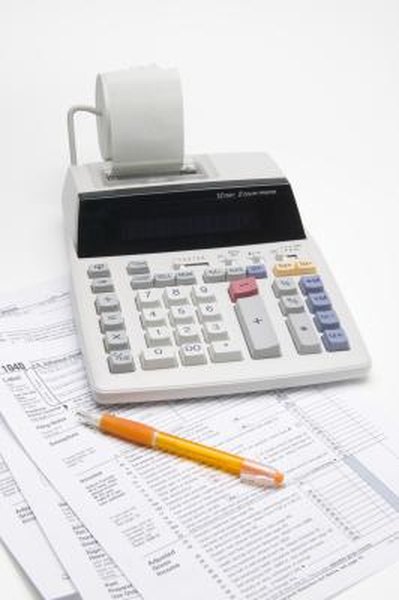How to Handle Restricted Stock 1099-B on a Tax Return
Restricted stock sales must be reported on your tax return.
Creatas/Creatas/Getty Images
Restricted stock cannot be sold until the limitation the company placed on it expires. Stock can be restricted for a number of reasons -- during a vesting period, for example, or until a goal is met, such as gross revenue meeting a specific threshold. Once the restriction is lifted and the shares are sold, the company will issue a 1099-B to the seller and report the transaction to the Internal Revenue Service.
Determine if the stock sale is a short-term or long-term capital gain. Using the Confirmation of Release date as the restriction termination date, if you held the stock a year or longer after the restriction termination date, the sale qualifies as a long-term capital gain. Enter the transaction information on Form 8949 in Part II. If you held the stock less than a year after the restriction termination date, the stock is a short-term capital gain. Enter the transaction information in Part I of Form 8949.
Step 2Check your 1099-B to determine if the stock basis was reported to the IRS. If basis was reported, select Box A. If it was not reported, select Box B. If you did not receive a 1099-B, select Box C. In either Part I or Part II of Form 8949 as determined earlier, start with Column A, Description of Property, and enter the company name or ticket symbol and the number of stock shares you sold.
Step 3Skip Column B and in Column C, Date Acquired, enter the date you purchased the stock shares -- the day the restriction ended -- in a month, day and year format. Move to Column D, Date Sold, and enter the sale date in a month, day and year format. In Column E, Sales Price, enter the amount stated on Form 1099-B. In Column F, Cost or Other Basis, enter the purchase price as stated on the Confirmation of Release. In Column G, enter any adjustments.
Step 4Add up the totals for columns E, F and G. If it is a short-term capital gain, enter the totals on Schedule D, selecting Line 1 if you checked Box A on Form 8949, Line 2 if you checked Box B or Line 3 if you checked Box C. On Schedule D, combine columns E, F and G and enter that figure in Column H and on Line 7. If the result is a capital gain, report it on Form 1040, Line 13. If it's a loss, complete Schedule D to calculate how much of the loss you can take, and report it on Line 13 on the 1040. Repeat the procedure for Part II.
References
Tips
- Use the Confirmation of Release to find the stock purchase price.
Warnings
- Short-term and long-term capital gains receive different tax treatment. Calculate the purchase and sale dates accurately.
Writer Bio
Based in St. Petersburg, Fla., Karen Rogers covers the financial markets for several online publications. She received a bachelor's degree in business administration from the University of South Florida.

